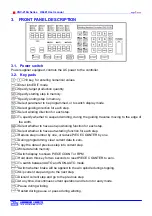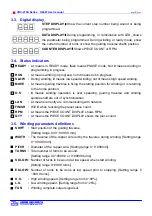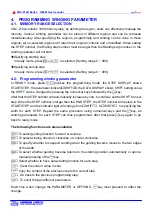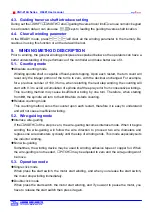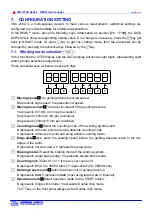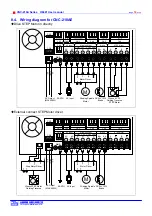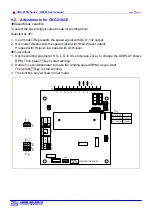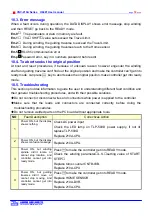
CNC-210A Series H6681 User manual
Page
7
of
20
έᚊཝҋજ̼ѣࢨ̳Φ
TAILY AUTOMATION CO.,LTD.
5.4. Running
mode
Continual mode
Before it begins winding, if
『
SHIFT
』
of the step set as 999.99, then the starting position,
the
width , the wire-guiding direction and the winding direction won't be re-read. The values are not
changed, that is the wire guiding will continue guiding wires on the same position. The width
and left-right margins are the same as the ones of the previous section. Both the wire-guiding
and winding directions are not changed either. This mode especially suits to winding which
have the multiple drawing tops in the same sets of coils.
Edges slow mode
The winding speed will slow down before the guiding traverse reach to the two edges of the
width (work with
『
E. SLOW
』
turns). After the guiding traverse veered, then restore to hi-speed
winding. (Refer to the section 7.1. edge slow mode).
Automatically circularly mode
If
key set to on, it means Automatically circularly mode, in this mode when finish a step of
winding it will automatically get into next step and start winding without press
key (work
with
and
keys).
5.5. How to set winding turns accurately
Preset method
Set the
『
E.SLOW
』
to zero first and then set the
『
TURNS
』
to the desired number. Set proper
parameters according to copper wire, bobbin, tension, etc, then press
to start winding.
When finished, obtain the actual number of turns and calculate the number of overshot turns.
Go into programming mode and subtract the number of the overshot turns from the
『
TURNS
』
to obtain the required setting.
This method has a higher throughput, however, the resulting stopping location may not be
precise.
High-Low speed method
This method uses a combination of
『
H.S
』
/
『
L.S.
』
and
『
E.SLOW
』
to achieve the desired
number of turns.
The
『
L.S.
』
should not be too high. The number of
『
E.SLOW
』
turns must be adequate to allow
the spindle shaft to slow down to low speed before reaching the total number of turns. This can
result in precise stopping location.
Double-brake method
As the winding turns of the winding shaft reach the numbers of the
『
E.SLOW
』
,
brake for a
short period first. After the winding shaft stops, continue winding at low speed. Therefore
the
numbers of the slow speed may be reduced and the efficiency of winding may be increased,
(Refer to the section 7.1. braking mode).



